Raasiku
We now find ourselves at Raasiku. Before we walk on to the church, we make a brief stop at Raasiku manor. As was already mentioned, the ruins of Raasiku manor lie by the road on the right. It would be easy to overlook them – what we see are actually only the production buildings constructed on the site of the former manor complex.
According to historical documents, the manor (Raseke) was registered in 1266 as the property of Cistercian monks. Afterwards, the ownership changed many times. In the 17th century, the manor belonged to the De la Gardie family, and then later to the Taubes, Stackelbergs, Bohns, Breverns and to the Loewensterns who owned Raasiku for nearly 70 years. From 1843 the manor was the property of the von Sievers family and from 1899 of the Stackelbergs from whom the manor was expropriated in 1919.
The main building completed during the Sievers period was burnt down in 1905 and it remained in ruins. During the Soviet period, factories were built on the site.


Right, we now proceed along Tehase road until the crossroads. To the confused traveller hesitating at this junction of five roads, we recommend the Tallinn road which leads to the church.
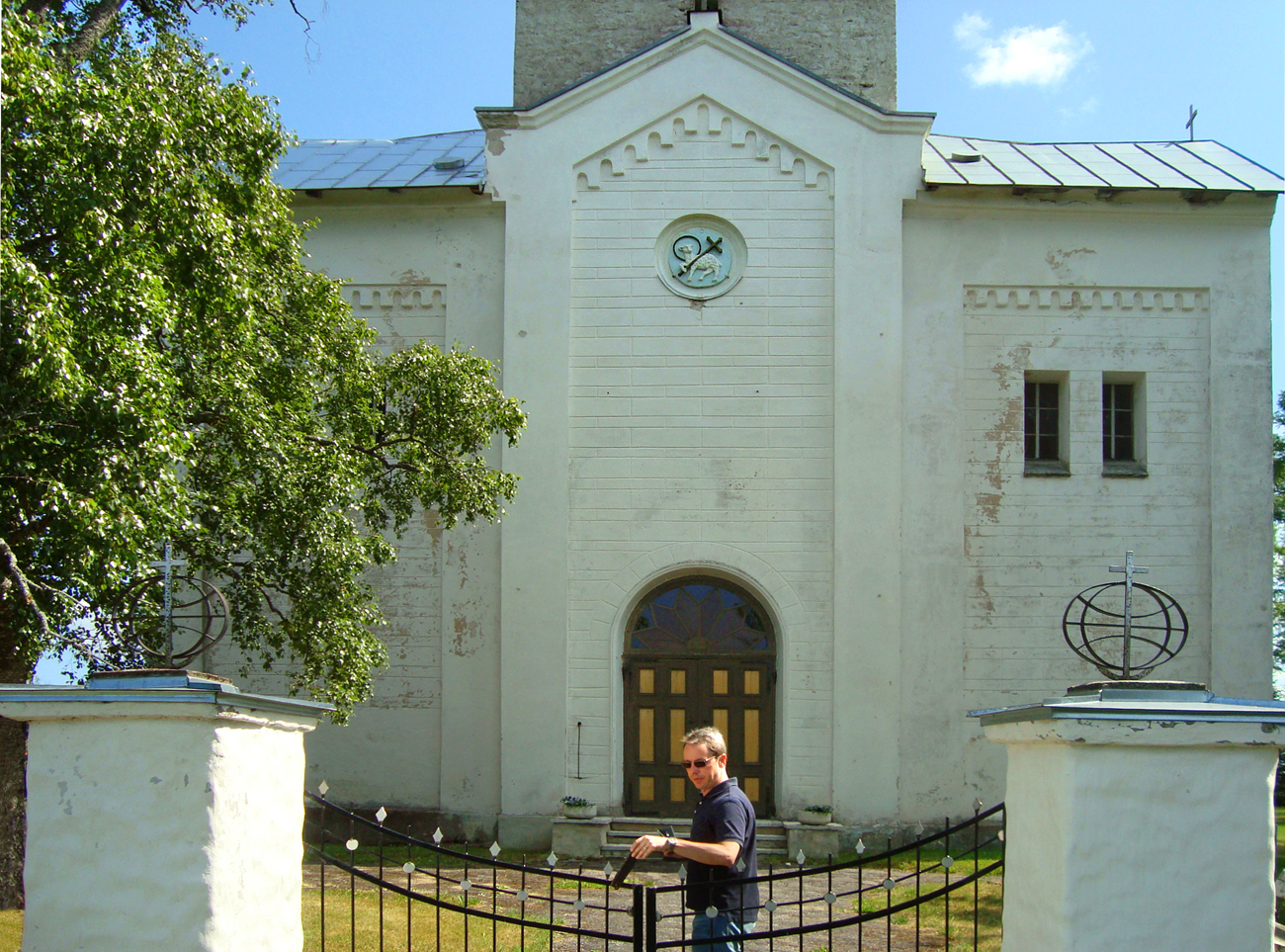
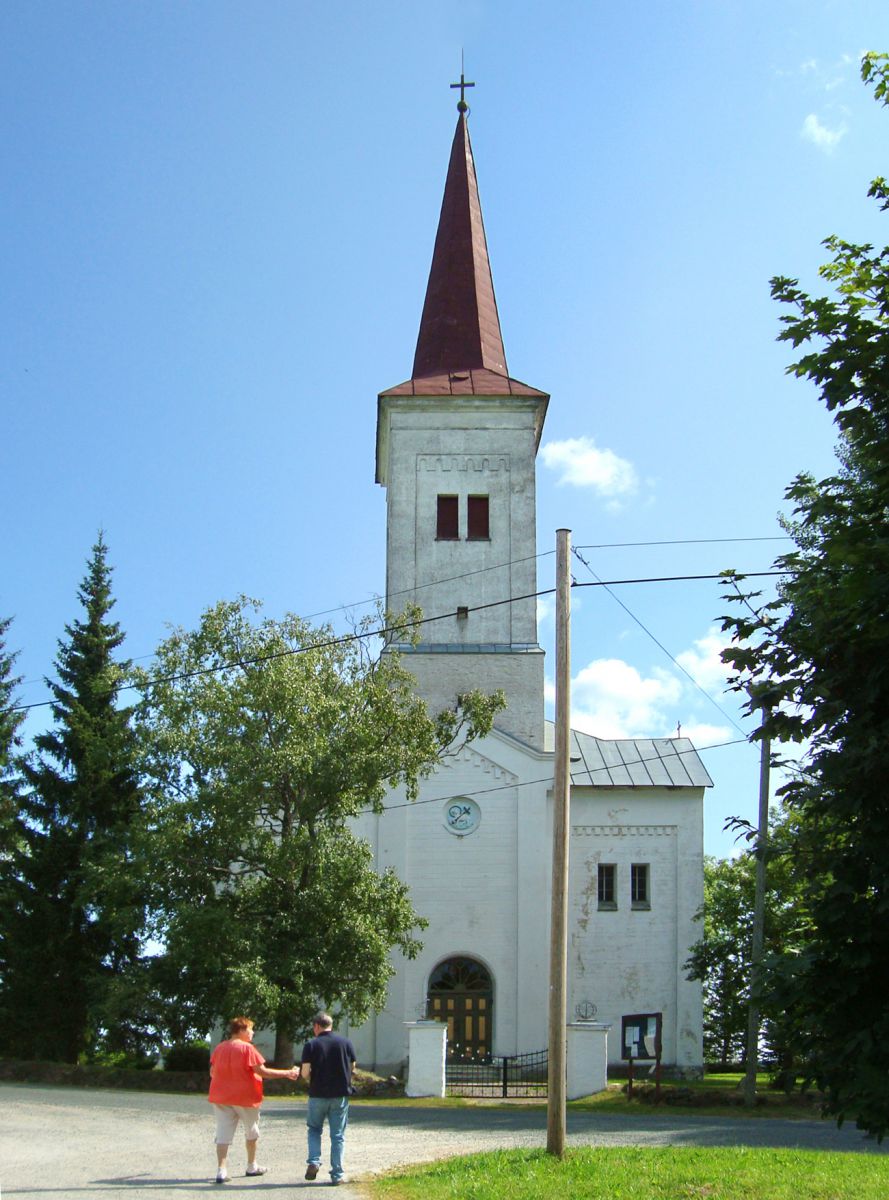
Harju-Jaani John the Baptist Church, with its tall tower, can be seen from afar.
By the mid-19th century the old church was in such bad condition that instead of trying to do some repair work again, it was decided to build a new church at Raasiku. Work began in 1860. The time was favourable as the Baltic Germans and the figures of the Estonian national movement both opposed Orthodox supremacy. Besides, Alexander II, who came to the throne after Nicholas I, was much more tolerant than his father had been.
Money for the church largely came from the manor owners of the parish, and the workforce was mainly made up of local peasants. The plot of land was offered by the Raasiku Sievers on condition that other manor owners would buy it from him and the money would cover the construction costs. The biggest sponsor was Ungern-Sternberg from Anija. The architect was Friedrich Wilhelm Alisch. The mason – as he was called – was in fact not a professional architect and, perhaps for that reason, various errors and mishaps occurred during construction work, so much so that the manor owners wanted some of the payment to be returned.
The new church was consecrated in autumn 1863. Masses of people attended. The cross was carried by the son of Raasiku Sievers, as the cross was a gift from the old Sievers.
One participant described his impressions as follows:
„The church is very light inside as there are seven big windows on both sides. Enough space as well … to accommodate hundreds of people… there are no columns or posts to prevent us from seeing everywhere. Two things however are a bit strange and new: the place of the pulpit and the church ceiling.”
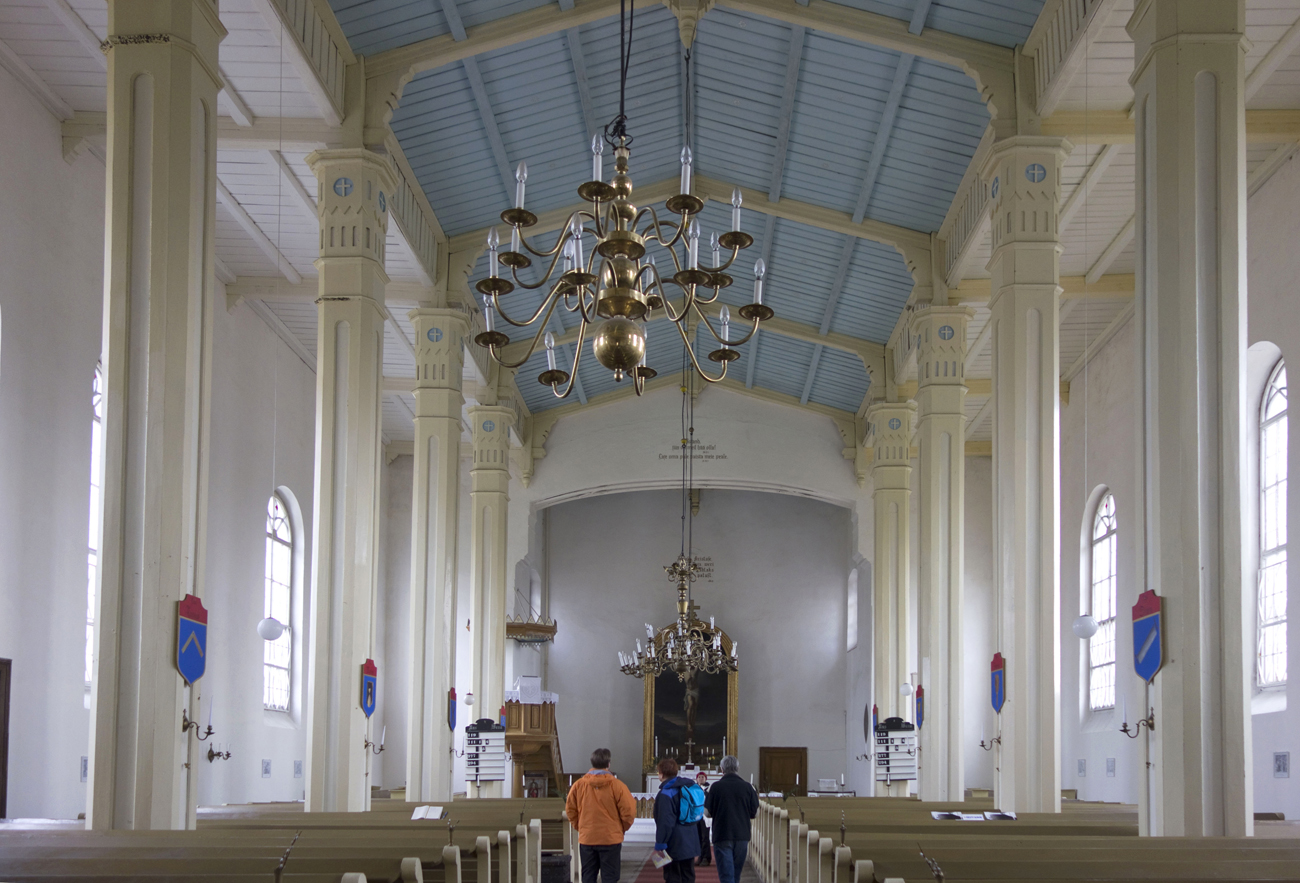
The pulpit was at first behind the altar on the wall, but already in 1864 it was relocated in the corner of the northern wall, as in most churches.
In 1869 the manor owners gave the church a new, 30-armed chandelier. The chandelier near the altar was brought from the old church, the third is a gift of Reverend Harri Rein. The author of the altar painting „Crucifixion” is O. Fr. v. Moeller (1873).
In 1876 the remarkably high church tower had a new roof made and a church bell weighing over 700 pounds was put up. The bell was recast in Tallinn. In 1899, another bell weighing 1000 pounds was ordered from Gatshina. In 1909 the old organ from Gustav Normann’s workshop was replaced by a new organ made by August Ternmann.
PRAYER
We beg you, Our Lord, to keep us safe in these tempestuous winds of change, brought to our life every day of the year. Help us found our life on solid ground: Your word and promises, Your love, Our Lord. Thus encouraged, we can survive and win everyday spiritual battles. Your unshakeable love and steady mind can shine from us on to others – let us be the light of the world and the salt of the earth, as You have arranged.
Glory to God in the highest, and on earth peace, good will in man.
Opposite the church stands a stone cross to unknown graves and in the churchyard there is a memorial to those killed in World War I and in the War of Independence. A path leading to the new cemetery was laid in 1929.
The old medieval church was demolished after the new church was completed. It is about a few hundred metres from the new church to the site of the old one. We walk along the Tallinn Road and turn off to a path at the end of which stands a memorial to the old church. The middle part of the monument of three dolomite blocks bears a picture of a little lamb with a halo and a cross and the text: “Here used to be the old Harju-Jaani Church and cemetery in the 14th–19th centuries.” The monument stands on the site of the old church’s altar.
The Harju-Jaani Church is first mentioned in 1322. The big church bell has the date 1400 on it.
For centuries, people’s lives were closely connected with the church, and the ties were not broken even after quitting this world as they were buried not only in the churchyard, but sometimes in the church itself.
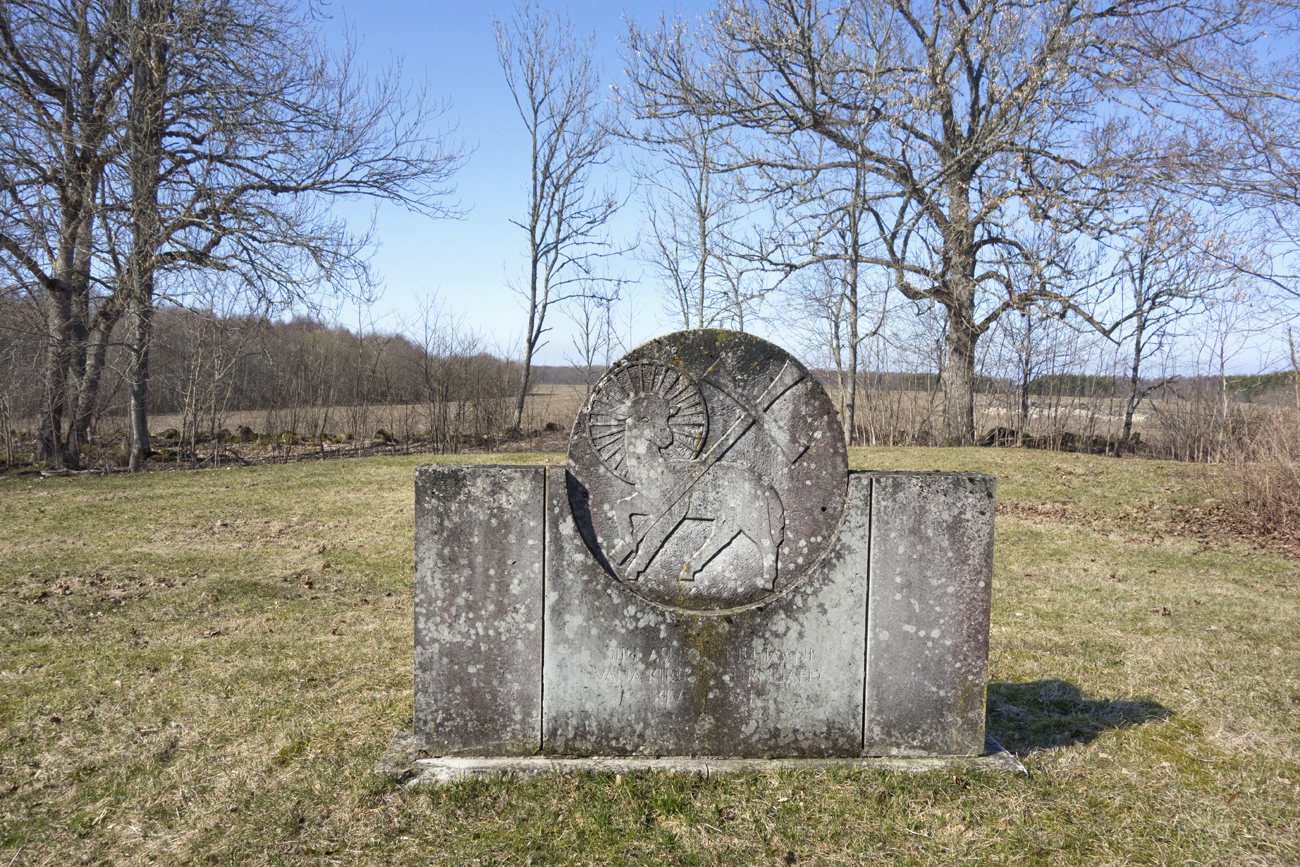
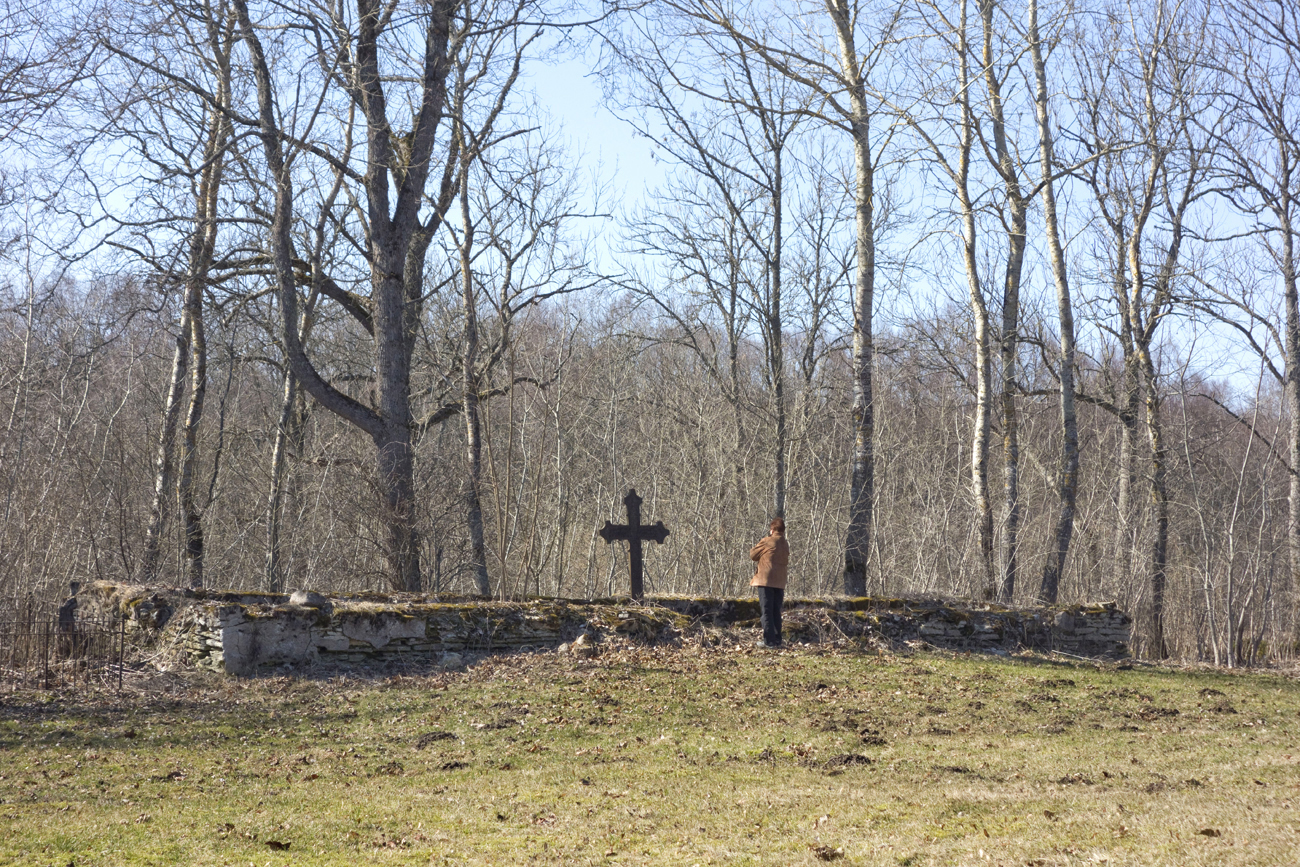
The chapel with the foundation still visible was built in 1777, some time after the Russian authorities no longer allowed burials in churches. The chapel held four burial sites: for the manor lord, the parish Germans, the pastor and the churchwarden. Two crosses are still there. The churchyard was used as a burial place until the 19th century.
The vicarage was consecrated in 1782. It was built by the Pikavere manor lord Baranoff whose German master builder managed to complete the building in three years instead of the planned four.
In order to reach the Harju-Jaani old cemetery we must walk on a little bit more along the Tallinn Road. The old cemetery was established in 1845, the chapel was completed in 1853. The buried people include the Stackelbergs, Baranoffs from Raasiku and Aruküla, and the Ungern-Sternbergs from Anija. The cemetery has been expanded and people have been buried on top of old graves.
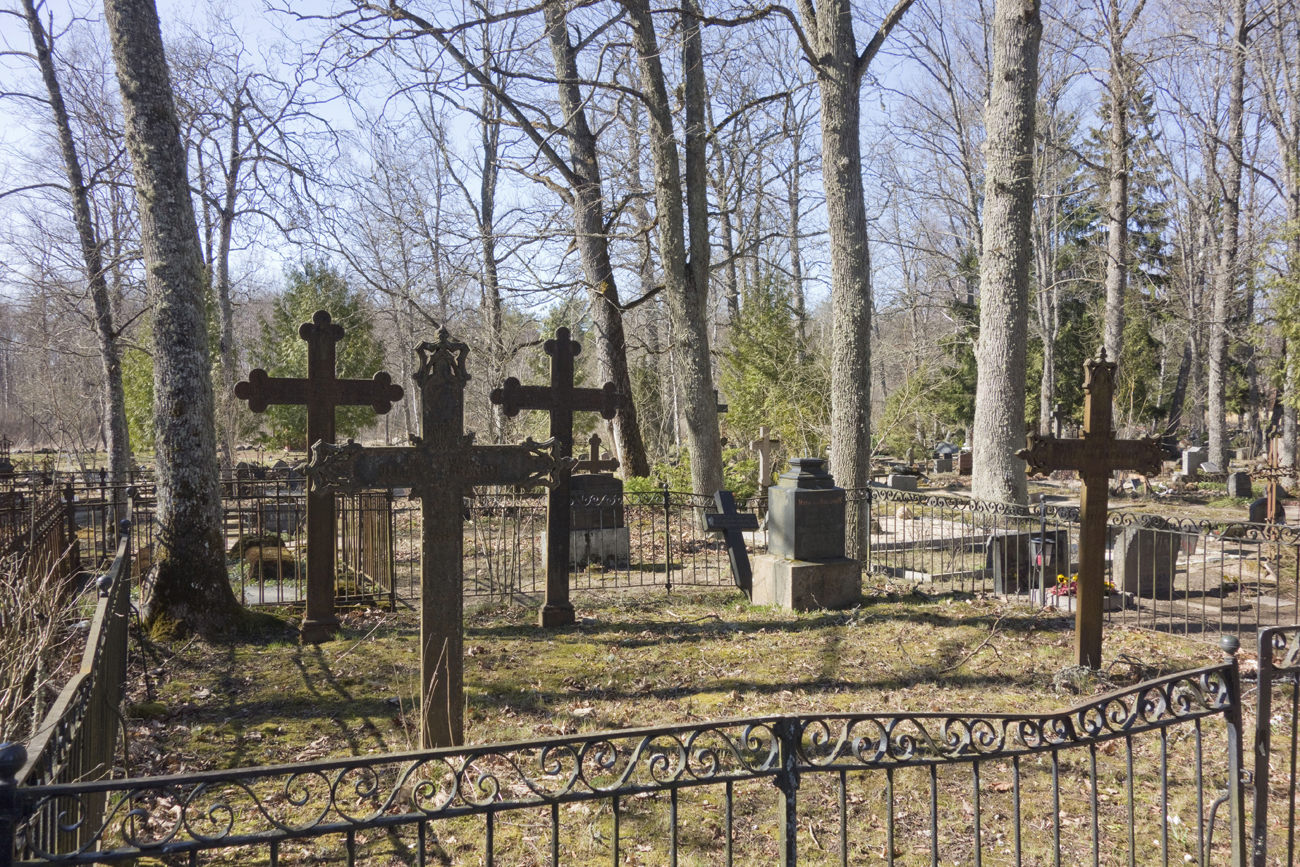
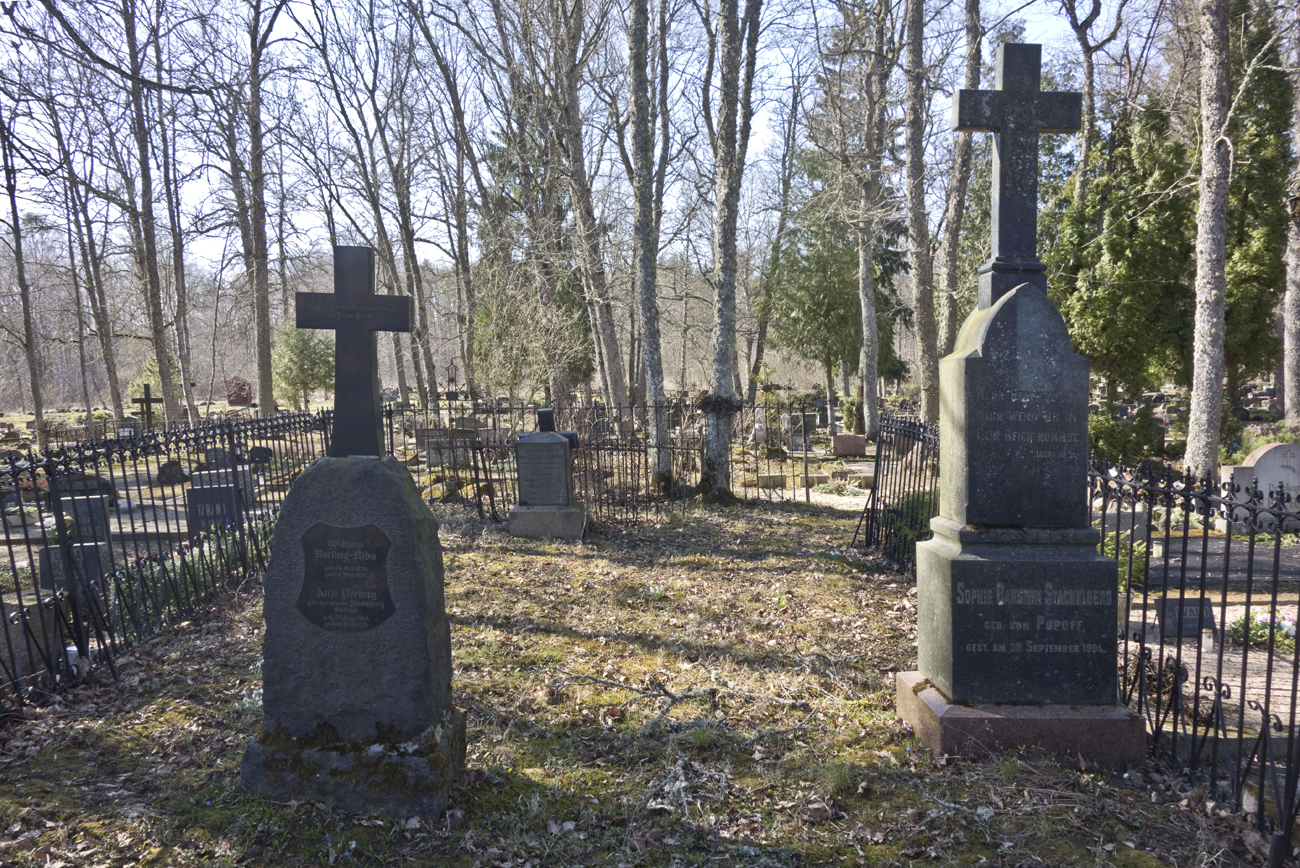
It is time to leave the old cemetery and return through the small country town back to the railway station. A memorial to the first mention of Raasiku stands near the corner of the Tallinn Road and Võidu Street.
Raasiku railway station is quite a significant place. On the initiative of Alexander von der Pahlen who belonged in the close circle of the Russian tsar and who was originally from Estonia, the Baltic Railway opened in 1870. It had an enormous impact on the development of Raasiku. Raasiku was the first stop for the train coming from Tallinn. The railway brought about the longer-distance transport of local agricultural and forestry productions and therefore greatly enhanced the local standard of living. The current small town of Raasiku emerged around the railway station and gradually expanded in the direction of the church.
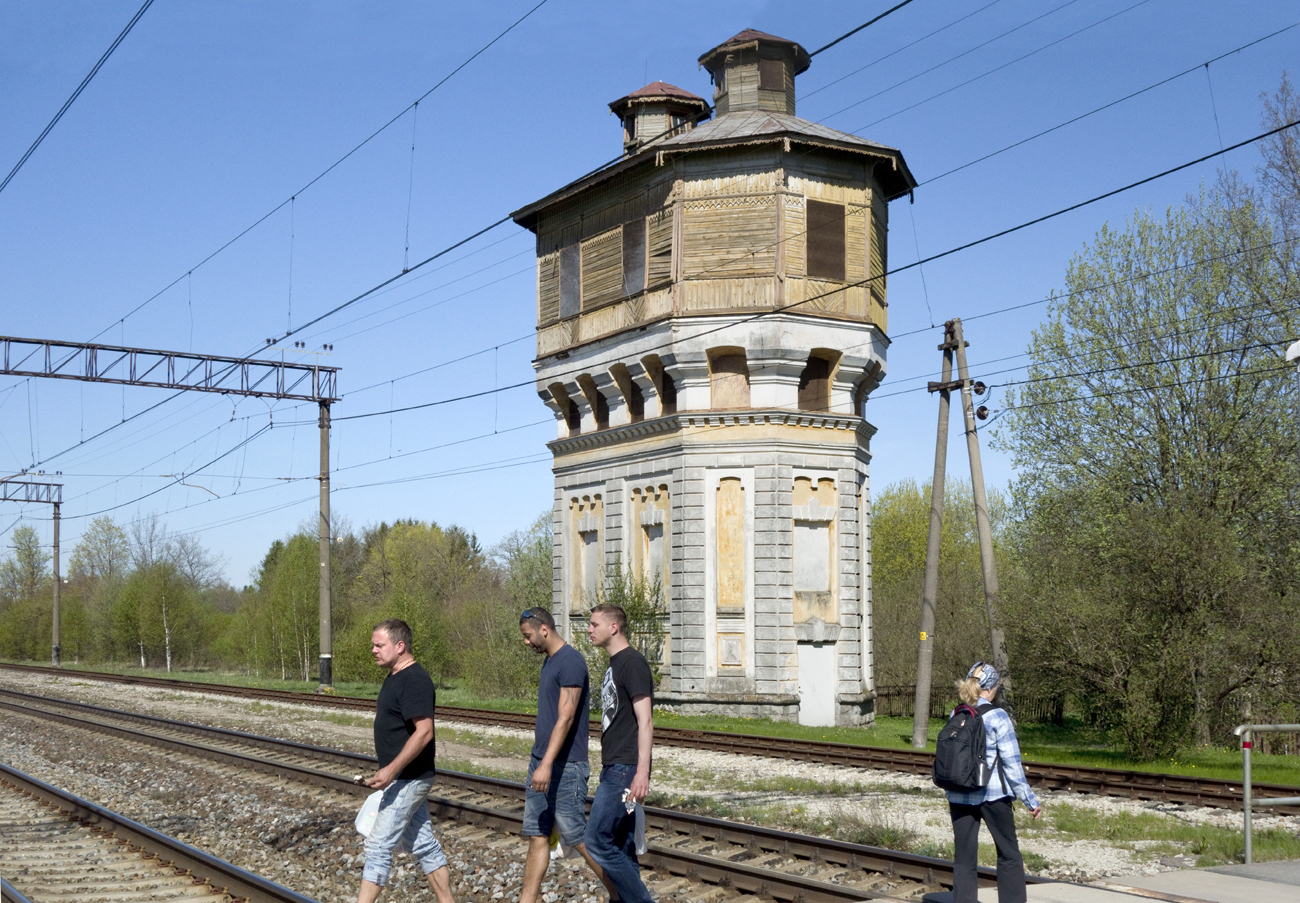
The historicist water tower (1870) near the railway station is certainly worth inspecting.
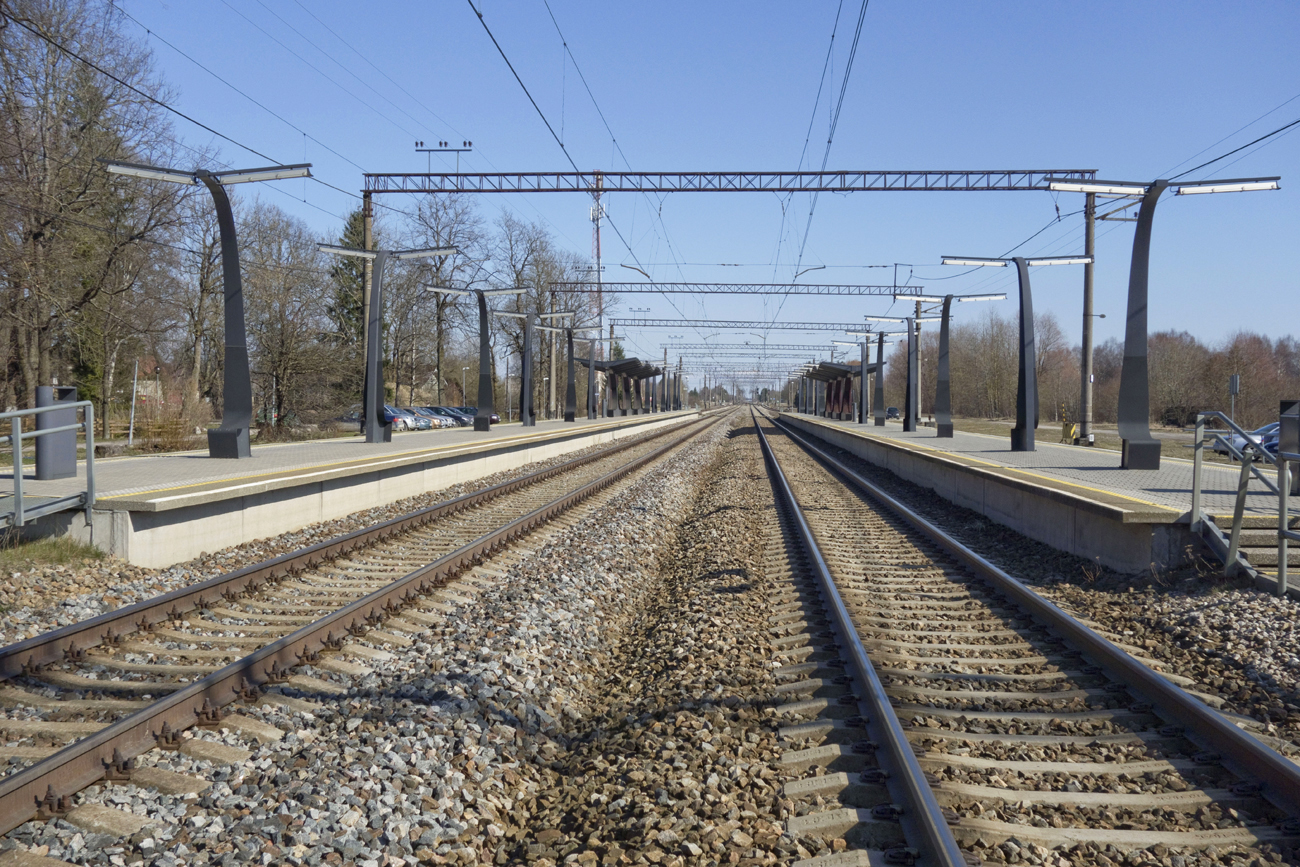
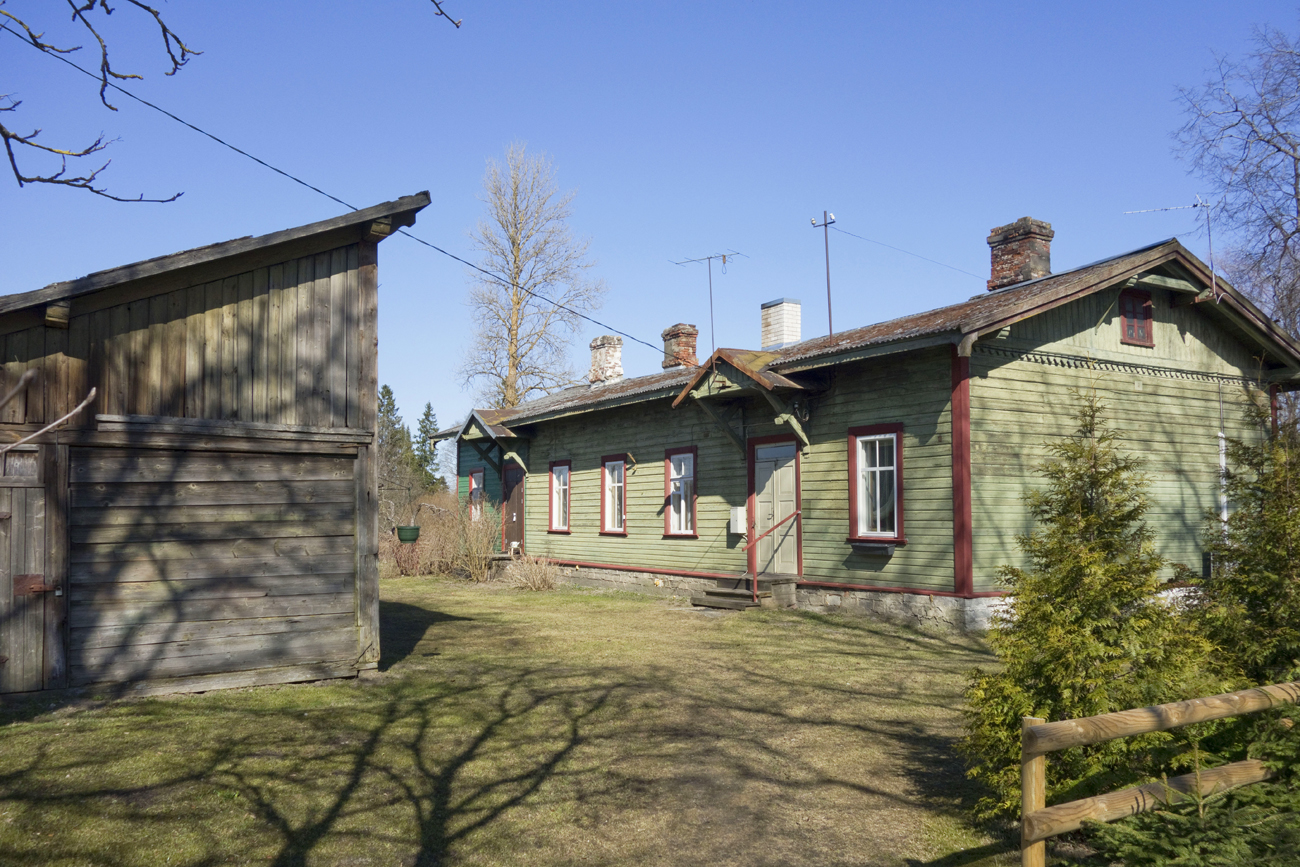
The Palgi inn and postal station is perhaps one of the oldest surviving houses in Raasiku. An inn operated there until 1870 where the coachmen could revive themselves with a drink or two and the horses could have a little rest as well.
The traveller can supplement his food supplies here. Who knows where you might come across the next shop, but here there are two to choose from.
Raasiku also has a post office.
Ago Papp and Daila Aas, spring 2016
Sources
Julius Põldmäe. „Harju-Jaani kihelkonnad läbi aegade”. Tallinn, 1992.
Vaino Napp. „1863. Uus kirik Raasikul”.
https://www.geni.com/people/Harry-Johannes-Rein/6000000014596801029
